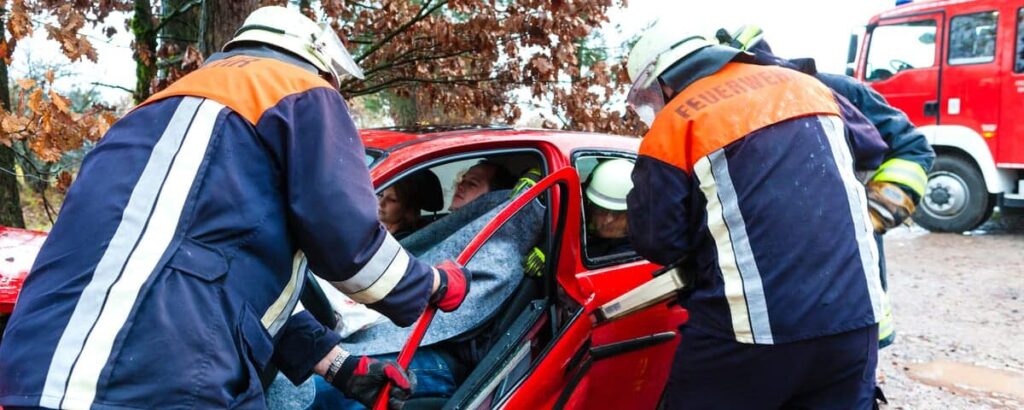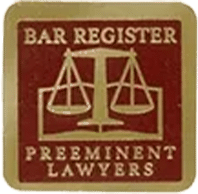
Car accidents typically leave victims with severe, painful injuries that are costly to treat and may require months of recovery time. Sadly, some people never make a full recovery. However, if another party was at fault for the crash, an injured individual can file a claim against that party and pursue just compensation.
For a claim to prevail in Oklahoma, an accident victim must prove that the other party was at fault. That party’s insurance company will likely challenge fault, however. The insurance company may also rely on Oklahoma’s comparative negligence law and try to shift blame to the car accident victim in order to reduce the victim’s compensation or deny the claim altogether.
If you were recently injured in a car accident in Oklahoma, you should contact Edwards & Patterson Law as soon as possible. We will protect your right to compensation when dealing with the insurance companies, and we will aggressively pursue the maximum amount of compensation for you. Call or reach us online today to learn more in a free consultation.

Hurt in A Car Accident?
Contact us today for your free & confidential case review. Our team will help you get the compensation that you deserve.
Why Does Fault Matter in Oklahoma Car Accidents?
Oklahoma is a fault state. If you get involved in a crash that a negligent driver causes, you must file a claim with that driver’s insurance company and seek a recovery through the driver’s liability auto insurance. In order to secure a full and fair settlement from the driver’s insurance company, you will need to prove that the other driver was at fault for the crash.
On the other hand, in a no-fault insurance state, a driver must first file a claim with his or her own insurance company, regardless of who was at fault. So, even if you were wholly or partially to blame for the accident, you can still recover compensation. However, the compensation that you can recover in a no-fault insurance claim typically is limited and fails to address non-economic damages such as pain and suffering.
The majority of states in the country follow the fault-based, or tort, system for auto accidents. Most of these states, including Oklahoma, have a contributory negligence, or comparative fault, law as well. The law may lead to a reduction in the damages which an accident victim recovers or a denial of damages.
What Happens If You Are Partially At Fault for a Crash?
Under Oklahoma’s comparative fault law, an accident victim can still claim compensation as long as the victim was 49 percent or less at fault for the crash. When accident victims are found to be 50 percent or more at fault for an accident, they are barred from receiving any compensation at all.
If you are partially at fault for a crash, you will be assigned a certain percentage of fault. Your compensation will be reduced by that same percentage. For example, if you were awarded $50,000 in compensation after a crash, but were found to be 20 percent at fault for the accident, you would receive $40,000. This is because 20 percent of $50,000 is $10,000. So, that amount will be subtracted from the compensation that you receive.
How Do You Prove Fault in a Car Accident?
To establish fault in a car accident, you must prove that the other party was negligent, and this negligence caused your accident and injuries. Some examples of evidence which can prove fault include:
- Police report – The police officer who responds to your crash will investigate what happened, collect information from all parties and prepare a written crash report. The report may not necessarily serve as a evidence, but it can help with the investigation.
- Traffic law violations – When a driver violates the Oklahoma Motor Vehicle Violation Code by doing something such as speeding or texting while driving, it is negligence. A driver’s cell phone records, for instance, could establish that the driver was texting at the time of the crash.
- Location of property damage – Often, the damage to the vehicles is enough to indicate how an accident happened and indicate who was at fault.
- Photographs and video – Pictures of the accident scene and of your injuries can help to prove which driver was at fault for the crash as well as the severity of your injuries. Today, many vehicles also have dash cams that can record what occurred.
- Black box data – Many late-model cars also have event data recorders (EDRs) that can provide information about a vehicle’s speed and braking at the time of the crash.
- Witness statements – A person’s statement about what he or she saw and heard can serve as powerful evidence of fault.
Our attorneys at Edwards & Patterson Law have extensive experience with handling car accident investigations in Oklahoma. We will know how to preserve, gather and analyze evidence which points to who was at fault for your crash. We will also know how to challenge any attempts to blame you for the accident.
Can Comparative Fault Be a Factor in Settlement Negotiations in Oklahoma?
After a car accident, the other driver’s insurance company will almost always try to argue that the accident victim was at least partially at fault for the accident. The goal is to reduce compensation. The insurance company may even try to argue that the accident victim was entirely or mostly at fault for the accident so it does not have to pay any compensation at all.
Your attorney from Edwards & Patterson Law will protect your rights when dealing with the insurance company. We will demand maximum compensation for you and fight any attempts to shift undue blame to you. If an insurance company fails to make a settlement offer which you can accept, then we will be prepared to present your case at trial.
Get Help from an Oklahoma Car Accident Attorney
If you have been hurt in a car crash, do not try to file a claim on your own. Our car accident attorneys in Oklahoma are here to help you. At Edwards & Patterson Law, we fight for the rights of accident victims, and we have the experience necessary to refute the other side’s arguments. Contact us now to schedule a free consultation and learn more about how we can help you.
Last updated Wednesday, December 25th, 2024













